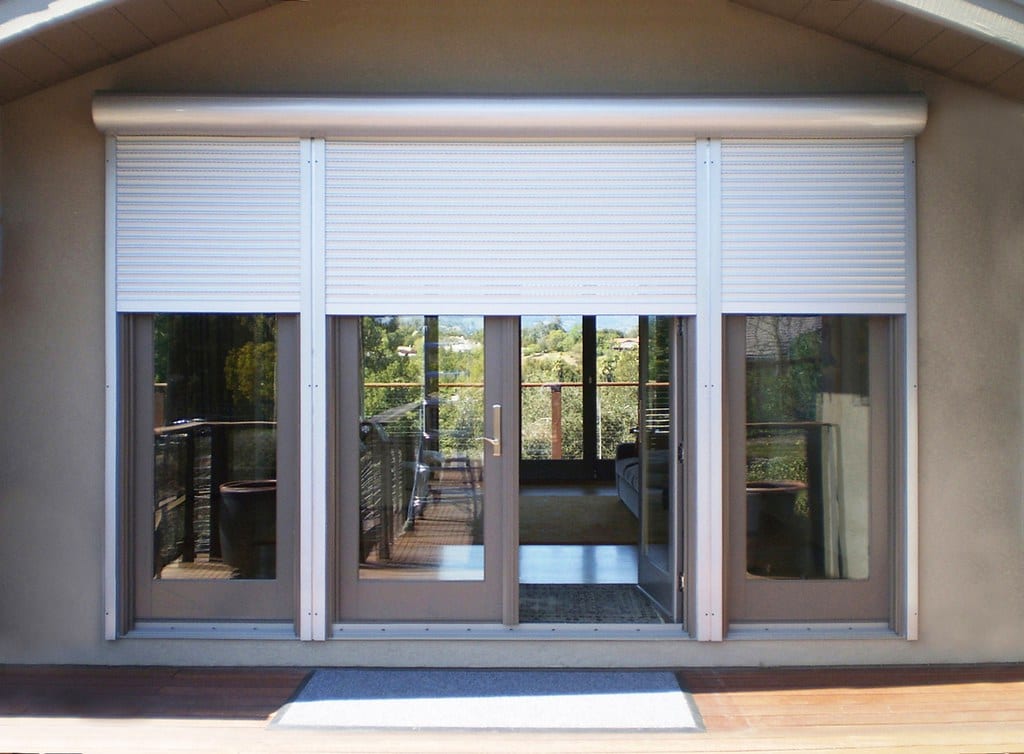If you’re tired of traffic, construction or noisy neighbours, noise reduction roller shutters are a durable, cost-effective solution that reduces sound, improves thermal performance and adds security—perfect for Australian homes and small businesses.
How noise-reducing roller shutters work
Roller shutters reduce airborne sound through three combined mechanisms: mass (dense slats that block sound), damping (foam cores or seals that absorb vibration), and airtightness (good seals to prevent sound leakage). In acoustic terms, adding mass and sealing the opening increases the transmission loss across the barrier.
Acoustic definition — transmission loss:
Transmission loss (TL) in decibels (dB) is the reduction in sound level when sound passes through a barrier. Higher TL = quieter room.
Acoustic performance & data
Typical lab and installer figures show:
| Shutter type | Typical dB reduction (real-world) | Perceived reduction |
|---|---|---|
| Basic aluminium single-skin | 6–12 dB | Noticeable, reduces mid/high frequencies |
| Insulated double-wall (foam core) | 12–30 dB | Significant — often described as ‘room-quieting’ |
| Sealed + professional install | +3–8 dB improvement | Better bass control and overall quietness |
Note: lab numbers are measured in controlled conditions (ISO/AS test methods). Real-world performance depends on gaps, wall construction and glazing quality.
Key features to look for
Material & profile
Double-wall aluminium with a polyurethane or polystyrene foam core gives the best balance of weight, rigidity and damping. For better low-frequency reduction, look for thicker slat profiles and higher mass per metre. For more on selecting the right profile, see our guide to roller shutter insulation benefits.
Sealing systems
Side brushes, rubber bottom seals and a well-designed headbox dramatically reduce leaks. Even a 3mm side gap can drop performance by several dB. You can read more about proper sealing and installation on our roller shutters installation tips page.
Motorisation & soft-close
Motorised shutters with soft-close and position control create a consistent seal every time, improving acoustic results compared to poorly aligned manual shutters.
Requested acoustic evidence
Ask suppliers for octave-band test results or an AS/ISO acoustic report (e.g., ISO 10140 style data) so you can compare like-for-like.
Installation & sealing — a step-by-step guide
- Measure precisely — order custom fit, not off-the-shelf sizes.
- Mount guides plumb — misalignment causes gaps.
- Fit side brushes and rubber seals — these stop air paths for sound.
- Seal headbox & wall junctions with acoustic silicone.
- Commission motor settings (if motorised) for soft, full closure.
- Test and tune: measure subjective noise before/after and fix remaining leaks.
Pro Tip: A professional installer with acoustic experience will often outperform cheaper installers by 3–8 dB—worth the extra cost if noise is your primary concern.
Benefits beyond noise
- Thermal performance: foam-filled shutters reduce heat gain and can lower cooling loads. Find additional thermal tips in our energy-efficient window coverings guide.
- Security: solid aluminium slats add physical protection.
- Weather & storm protection: durable profiles provide extra resilience in coastal or storm-prone areas.
- Privacy & blackout: useful for shift workers or media rooms.
Buying guide & pricing (Australia)
Prices vary by size, motorisation, insulation and installation complexity. As a ballpark:
- Small window (1200×1000 mm) — from ~AUD 600–1,200 (basic).
- Insulated motorised shutter (large openings) — AUD 1,200–3,500+.
Get at least three quotes and request acoustic data for the exact model. Always confirm warranties and compliance for bushfire or coastal ratings if relevant. For tips on getting the most value, check our roller shutters buyer’s guide.
Roller shutters vs other sound reduction options
| Solution | Typical noise reduction | Cost | Pros | Cons |
|---|---|---|---|---|
| Insulated roller shutters | 12–30 dB | Mid | Multifunctional: security, thermal | Requires good install |
| Double/triple glazing | 15–42 dB (depending on spec) | High | Best for windows only, long life | Expensive replacement |
| Acoustic curtains | 3–8 dB | Low–mid | Cheap, easy to install | Poor low-frequency reduction |
Case study — Australian suburban retrofit
Scenario: Single storey townhouse near a busy arterial road. Measured external peak ~78 dB at night. Installer fitted insulated double-wall shutters on three rear windows, sealed headbox and brush seals in tracks.
Outcome: Post-install measurements showed ~15 dB reduction at window face; occupants reported far fewer sleep disturbances and lower AC runtime by an estimated 12-18% during hot months.
Checklist — 5 steps before you buy
- Request specific dB or octave-band data for the exact product.
- Confirm installer experience with acoustic jobs (ask for references).
- Check seals, side brushes and headbox details in writing.
- Compare motor vs manual: motorisation often improves seal consistency.
- Verify warranty, bushfire/coastal ratings if relevant.
Frequently asked questions
Can roller shutters completely soundproof a room?
No—no retrofit will fully “soundproof” a room. However, quality insulated shutters with airtight installation can reduce noise substantially (often 10–30 dB depending on conditions).
Does installation quality matter?
Yes—proper sealing, plumb guides and a correct headbox fit are critical. Poor installation can cut performance by several dB.
Are motorised shutters quieter?
Motorised systems with soft-close offer more consistent closure and less slamming, which improves perceived quiet and prolongs seal life.
Will shutters reduce low-frequency noise (bass)?
Low frequencies are the hardest to block. Heavier slat mass and sealed installations help, but for very strong bass sources you may also need structural solutions or glazing upgrades.

